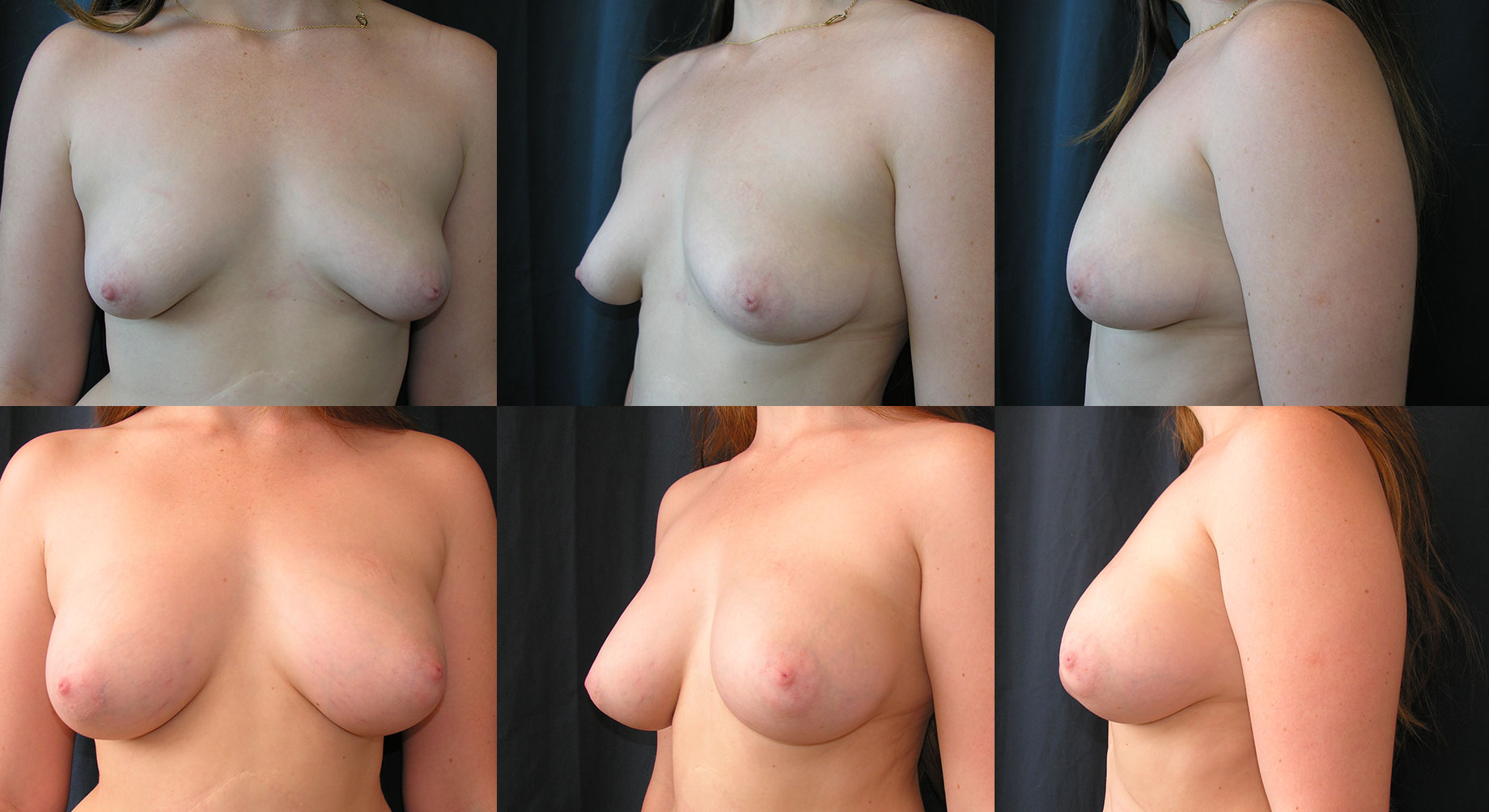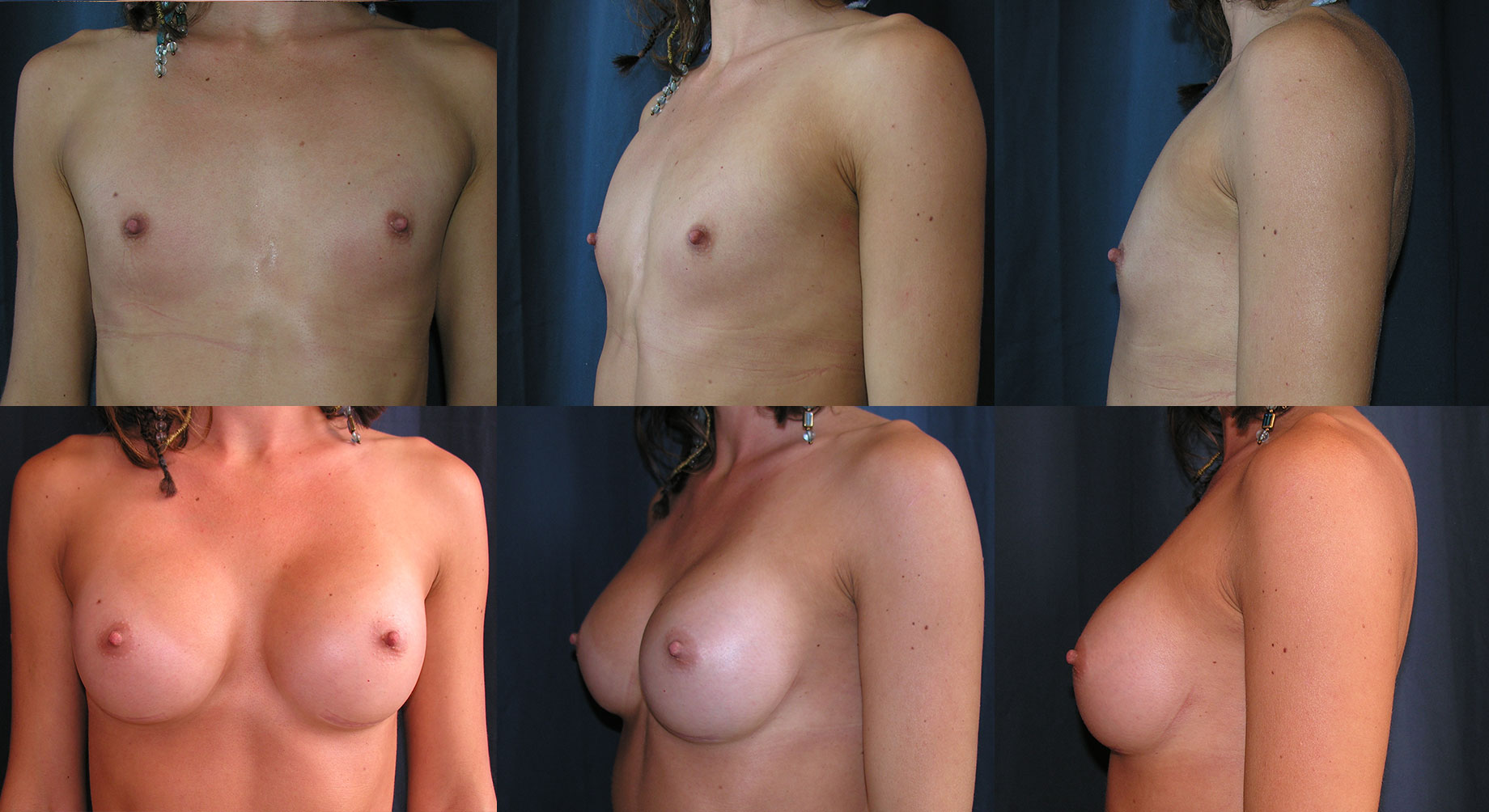Breast Augmentation
A breast augmentation increases the volume of the breast. Dr.La Via will work with you to achieve the most natural and aesthetically pleasing result based on your desired outcome and individual body type.
Who can benefit from a breast augmentation? A woman who has naturally small breasts for her frame and wants to look more proportional, who has lost volume in her breasts due to pregnancy or breast feeding, has asymmetry of the breasts or simply prefers the aesthetics of larger breasts. There are several ways to accomplish this goal. Most commonly a breast implant is placed either above or under the muscle. Fat can also be transferred from another part of the body to the breast to achieve increased volume.
When discussing breast augmentation surgery there are several decisions that will have to be made with the help of your plastic surgeon before surgery takes place:
Frequently Asked Questions
Both saline (salt-water) and silicone implants have a silicone shell. Saline implants do not come pre-filled and can therefore be inserted through smaller incisions than silicone implants. They also do not require the same amount of monitoring since it is quite clear when they rupture as the salt water quickly gets absorbed by the body. Silicone implants come pre-filled and require a slightly larger incision In order not to damage them during the insertion. Because the implant is filled with gel, the feel of the implant is more natural. Since the gel doesn’t get absorbed if there is a leak, the implants should be monitored so that any leakage can be detected in a timely fashion.
Currently Saline implants are FDA-approved for augmentation in women 18 years of age and older. Silicone implants are FDA-approved for augmentation in women 22 years of age and older.
Saline or silicone implants may be recommended at a younger age if used for reconstruction purposes. Dr. La Via will discuss the options available to help you make the right decision for you.
The placement of the scar from the insertion of the implant will depend on factors such as areolar size, if the breast hangs over the inframammary fold, the size of the implant (if placing a silicone implant) and patient preference.
Some women may need a breast lift at the time of the breast augmentation because either the nipple sits too low on the breast or there is excess skin.
Placing the implant under the muscle (or partially under the muscle has been shown to decrease the risk of capsular contracture (hardening) of smooth walled implants. It also provides extra padding over the implant along the upper chest and cleavage area which can make a big difference in thin patients. For some patients, placing the implant on top of the muscle has an aesthetic advantage, and the recovery is easier when the muscle is left untouched.
Breast augmentation by fat transfer is an option if the patient has adequate amounts of fat in other areas that can be used and desires a modest increase in breast size. A certain percentage of the transferred fat will be absorbed by the body, but what does remain is permanent..
The results of your breast augmentation surgery will be long-lasting. You will find it easier to wear certain styles of clothing and swim wear.
Like many women who have had breast augmentation, you may also have a boost in self confidence.
Implants may need to be replaced or revised
It’s important to know that your breast implants are not permanent and may require replacement during your lifetime. You should expect to have future visits with your plastic surgeon to discuss changes in your breasts.
Over time, your breasts can change due to aging, weight fluctuations, hormonal factors and gravity. If, after a period of years, you become dissatisfied with the appearance of your breasts, you may choose to undergo a breast lift or implant exchange to restore a more youthful contour.
Dr. La Via and/or her staff will explain in detail the risks associated with surgery. You will be asked to sign consent forms to ensure that you fully understand the procedure you will undergo and any risks or potential complications.
The risks include:
- Unfavorable scarring
- Bleeding (hematoma)
- Infection
- Poor healing of incisions
- Changes in nipple or breast sensation, may be temporary or permanent
- Capsular contracture, which is the formation of firm scar tissue around the implant
- Implant leakage or rupture
- Wrinkling of the skin over the implant
- Anesthesia risks
- Fluid accumulation
- Blood clots
- Pain, which may persist
- Deep vein thrombosis, cardiac and pulmonary complications
- Possibility of revisional surgery








